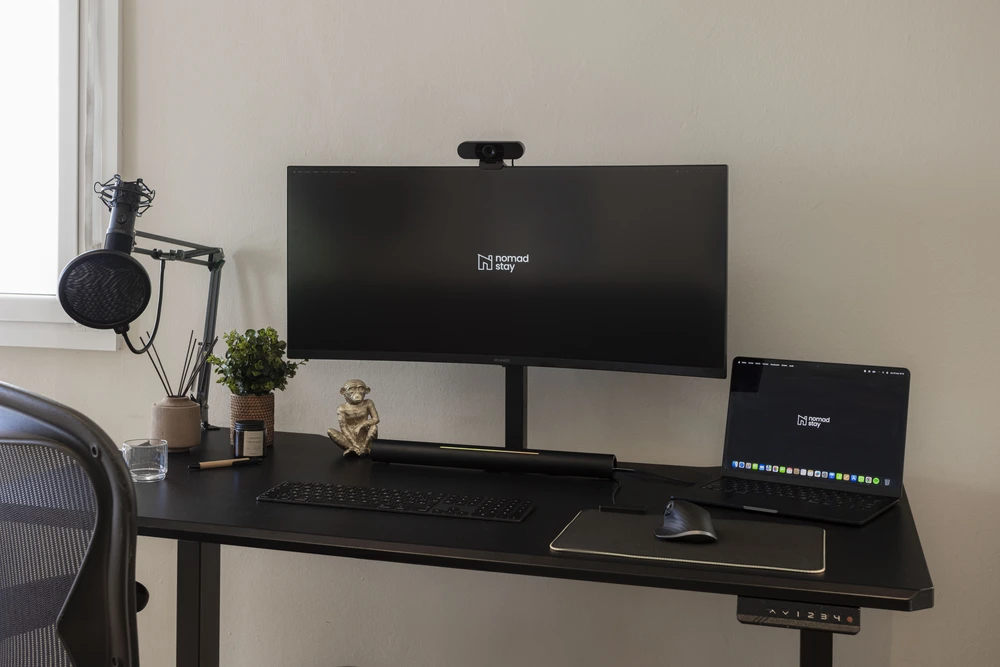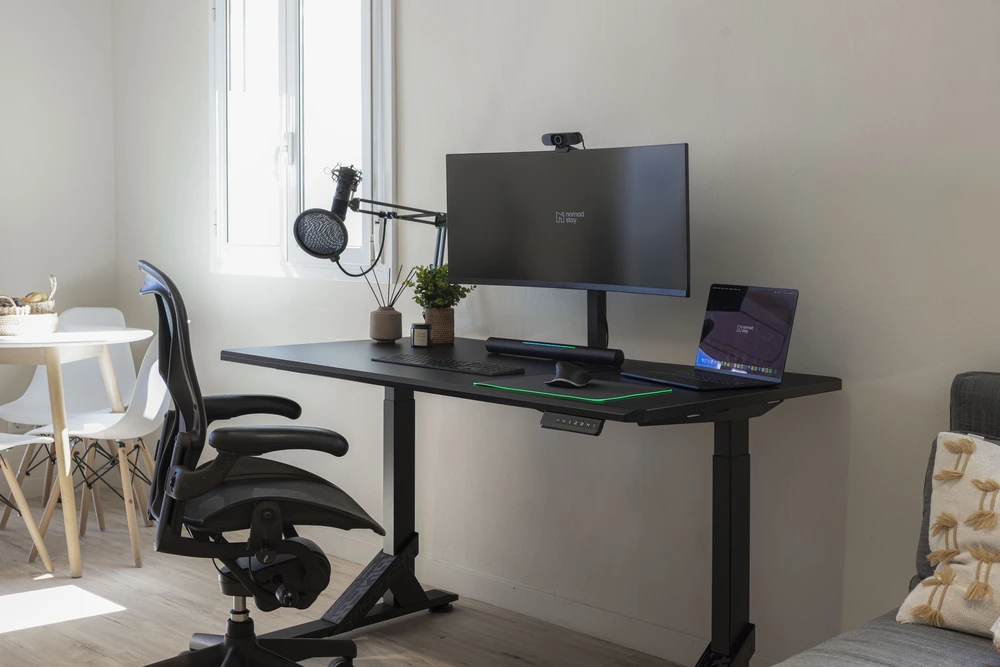Digital Nomad Gender Trends in 2025: Why 93% Are Men
Explore the gender disparities in digital nomadism, revealing why 93% are men and the challenges women face in this evolving landscape.

Digital Nomad Lifestyle Trends 2025: A Look at Gender Trends and Why 93% Are Men
Digital Nomad Gender Trends in 2025: Why 93% Are Men
The digital nomad community is rapidly expanding, but a striking gender gap persists: 93% of digital nomads are men. Most digital nomads are male, highlighting a significant gender imbalance within the community. This trend is especially pronounced in tech-related careers, where digital nomad men dominate fields such as software development and entrepreneurship. The reasons behind this disparity are complex, involving factors like income, safety, and access to remote work opportunities.
Key Stats:
- • 93% of digital nomads are men
- • Average income: $85,000/year
- • 70% have a college degree
- • 60% cite safety as a top concern
- • Digital nomad demographics reveal a majority of men, with most digital nomads aged between 25-40, and a growing diversity in backgrounds and nationalities
Digital Nomad Gender Trends in 2025: Why 93% Are Men
In 2025, 93% of digital nomads are men, while only 7% are women. This stark gender gap is driven by male dominance in tech-related careers like software development (+251%), web development (+264%), and crypto (+253%). Women, on the other hand, are more present in creative fields like marketing (16%) and blogging (8%), but these roles represent a smaller share of the digital nomad economy. Digital nomad lifestyle statistics reveal not only this gender disparity but also provide insights into the daily habits, challenges, and activities of digital nomads.
Key stats:
- Income gap: Men earn $126,000 annually, 10.5% more than women at $114,000.
- Safety concerns: Women face more risks while traveling, limiting their mobility.
- Education parity: 91% of men and 88% of women hold higher education degrees.
- More digital nomads: The number of people adopting this lifestyle continues to rise each year, reflecting its growing appeal.
The surge in digital nomadism is driven by key factors such as global adaptation to remote work, economic shifts, and increased access to technology. As a result, emerging digital nomad hotspots are gaining popularity among remote workers, offering reliable internet, coworking spaces, and time zone compatibility. Efforts like mentorship programs, safer housing options, and inclusive communities are working to close this gap, reflecting the evolving nature of digital nomad life.
Introduction to Digital Nomadism
Digital nomadism is a modern lifestyle that blends work and travel, empowering individuals to earn a living while exploring new cultures around the globe. The digital nomad lifestyle has seen explosive growth, with over 40 million digital nomads worldwide in 2025. This surge is fueled by advances in technology, the rise of remote work, and a collective desire for greater freedom and flexibility. Many digital nomads rely on reliable internet connections to maintain productivity as they move from place to place. Countries are responding to this trend by introducing dedicated digital nomad visas, making it easier for remote workers to legally live and work abroad. As digital nomadism continues to evolve, more people are embracing the nomad lifestyle, seeking out new experiences and opportunities in diverse locations.
Demographics of Digital Nomads
The digital nomad community is made up of people from a wide range of age groups, backgrounds, and professions, all drawn to the nomadic lifestyle. Most digital nomads are in their 30s, with millennials and Gen Z making up a significant portion of the movement. While male digital nomads currently dominate the scene, more female digital nomads are joining each year, contributing to a more diverse digital nomad workforce. Many digital nomads have higher education degrees, and popular fields include software development, marketing, and consulting. The average digital nomad earns over $120,000 annually, with many working as independent contractors or remote employees. This diversity in age, gender, and professional background is helping to shape the future of digital nomadism.
Digital Nomad Visas and Travel
Digital nomad visas have become a game-changer for those pursuing the nomadic lifestyle, allowing digital nomads to work and live in foreign countries for extended periods. Countries like Portugal, Spain, and Japan now offer dedicated digital nomad visas, providing a legal framework for remote work and making it easier for digital nomads to settle in new destinations. Many digital nomads travel to places known for affordable living, vibrant culture, and reliable internet, with top digital nomad destinations including Thailand, Mexico, and Colombia. Emerging digital nomad hotspots like Croatia and Italy are also gaining popularity as they introduce new incentives to attract digital nomads, such as tax breaks and long-term visa options. The digital nomad movement is reshaping how countries approach remote work, with more governments competing to become the next big destination for digital nomads.
The One on the Gender Gap in Tech
Career Fields and Gender Imbalance
The gender gap in digital nomadism is closely tied to career choices and opportunities. Data shows clear trends in how professions influence the gender dynamics of location-independent work. Many digital nomads pursue digital nomad jobs, which include a wide range of remote-capable roles suited for a nomadic lifestyle.
As the remote work landscape evolves, there is a noticeable shift with more independent workers transitioning from traditional employment to freelance or self-employment, contributing to the growth of digital nomadism in 2024.
Popular digital nomad jobs include freelance writing, web development, graphic design, and virtual assistants, which are in high demand among remote professionals. Creative and marketing roles, such as content creation and social media management, are also sought after by digital nomads for their flexibility and portability.
Tech and Crypto: Male-Dominated Areas
Tech-related careers dominate the digital nomad space, with software development leading the way. Male digital nomads often prefer destinations known for vibrant tech scenes, outdoor sports, and networking opportunities, such as Lisbon, Bali, and Chiang Mai. Men significantly outnumber women in these fields:
| Tech Field | Male Advantage Over Women |
|---|---|
| Mobile Development | +349% |
| Web Development | +264% |
| Crypto | +253% |
| Startup Founders | +137% |
These numbers highlight how male participation heavily skews in tech and crypto-related roles. This trend has roots in the traditional business world, where men have historically dominated technology and professional sectors, shaping the evolution of remote work and digital nomadism.
Marketing and Creative Roles: Female-Led Areas
On the other hand, women thrive in creative and community-focused roles. Marketing, at 16%, is the leading field for women, with a slight edge over men (+1%). Other areas where women hold an advantage include:
| Female-Led Field | Women's Advantage |
|---|---|
| Creative Roles | +23% |
| Blogging | +24% |
| Community Roles | +24% |
| Coaching | +25% |
Many in these fields are location independent professionals, who often require specialized insurance or support tailored to their remote and travel-based work lifestyles.
While these roles often provide flexibility and easier access, they make up a smaller portion of the overall nomad economy.
Gender and Income Gaps
Men earn an average of $126,000 annually, which is 10.5% higher than women, who average $114,000. On average, digital nomads earn between $50,000 and $150,000 per year, though this can vary widely depending on profession and region, demonstrating the financial viability of the digital nomad lifestyle. The disparity is even more pronounced among high earners ($100k-$1M), where men dominate:
| Income Bracket | Men | Women |
|---|---|---|
| $100k-$250k | 36% | 30% |
| $250k-$1M | 8% | 7% |
| >$1M | 2% | 1% |
These figures highlight how income differences reflect the gender imbalance in high-paying sectors like tech. Additionally, how digital nomads spend their earnings often depends on the cost of living in their chosen destinations, with many allocating funds toward accommodation, coworking spaces, and travel experiences. The challenges women face in bridging these gaps will be discussed further in the next section.
Digital Nomad Community and Lifestyle
The digital nomad community is a dynamic and supportive network where individuals share resources, advice, and experiences. Many digital nomads join online communities, attend networking events, and work from coworking spaces to connect with others who share the nomad lifestyle. Adaptability, self-motivation, and resilience are essential traits for thriving in this environment, but the rewards include unparalleled freedom and flexibility. Digital nomads tend to prioritize work-life balance, often spending their downtime exploring new cultures, sampling local cuisine, and enjoying outdoor adventures. The digital nomad lifestyle is more than just a trend—it's a movement that is redefining the way people work, live, and connect across borders.
Challenges for Women in Digital Nomadism
The gender imbalance in digital nomadism arises from several challenges that tend to affect women more than men. Personal safety is a significant concern for many women, as traveling and working remotely can expose them to unique security risks. Studies and digital nomads reporting have highlighted that issues such as safety, financial stress, and travel burnout are commonly experienced, with a notable proportion of remote workers disclosing these challenges. Cultural expectations and income disparity further contribute to the imbalance.
Safety Concerns for Women Travelers
Safety is a major concern that often restricts where women can travel and stay. Services like RentRemote aim to tackle this by offering properties with features such as 24/7 monitoring, controlled access, and well-lit surroundings in safer areas. These enhanced safety measures not only benefit women travelers but also help attract remote workers, especially female digital nomads seeking secure long-term stays.
Cultural and Societal Expectations
Women digital nomads are 72% progressive in their views, compared to 46% of men. However, societal expectations often demand that women juggle traditional roles along with their nomadic lifestyle. In some regions, cultural norms can also limit mobility and access to work opportunities. Additionally, digital nomads identify across a spectrum of backgrounds, with increasing visibility and representation of LGBTQ+ individuals within the community, highlighting its diversity.
Income Disparity in Remote Work
While remote work has opened up new possibilities, challenges remain. Women often thrive in roles like marketing, creative work, and community management, but they still face a significant income gap. On average, women earn $114,000 annually compared to $126,000 for men. This income difference can make it harder for women to afford safer accommodations and travel options. For women digital nomads, affordable living is especially important, as it allows them to stretch their budgets further and access better quality of life. Additionally, cost of living is a key factor influencing destination choices, as women often seek locations where their income goes further and essential services remain accessible.
"The digital nomad community will continue to grow and become more diverse, leading to new opportunities for women and underrepresented groups", states a recent study by Lennon Wall.
Efforts to create more inclusive opportunities could help reduce the gender gap in digital nomadism.
Remote Work and Productivity
Remote work is at the heart of the digital nomad lifestyle, with many digital nomads working as freelancers, independent contractors, or remote employees. To stay productive while working remotely, digital nomads rely on a suite of digital tools, including project management software, virtual communication platforms, and portable Wi-Fi devices. Achieving a healthy work-life balance is key, with many digital nomads making time for self-care, exercise, and social activities alongside their professional responsibilities. As the digital nomad movement grows, innovations in virtual reality, artificial intelligence, and blockchain are set to further enhance collaboration and productivity for remote workers. Staying connected with the digital nomad community, attending industry events, and keeping up with the latest trends and technologies are essential for anyone on the digital nomad journey.
Opportunities for Change in 2025 and Beyond
The digital nomad world is shifting, with new efforts and platforms aiming to create a more balanced gender representation. Many regions and governments are now implementing policies and incentives to attract digital nomads, recognizing the economic and cultural benefits they bring. Despite the current 93% male dominance, there's progress on the horizon.
Inclusive communities are also emerging, and these environments offer valuable networking opportunities that are essential for professional growth and community engagement among remote workers.
Programs Supporting Women
Groups like Women Who Code and Girls in Tech are making strides by offering mentorship and training programs tailored for women. These initiatives help women build the skills and confidence needed to thrive in technical roles, which have long been male-dominated. Recently, there has also been a notable rise in Gen Z digital nomads participating in these programs, reflecting a demographic shift as more young professionals seek flexible, travel-friendly careers.
Addressing Safety and Accessibility
Platforms such as RentRemote are tackling safety concerns by providing secure housing options for female nomads in popular destinations. In addition to safety, having a reliable remote work setup—including essential tools, gadgets, and company support for equipment and internet costs—is crucial for female digital nomads seeking both security and productivity. By addressing these challenges, they help remove barriers that have historically limited women's participation in the digital nomad space. Combined with improvements in education access, these changes signal a move toward a more inclusive community.
Closing the Gender Gap
With women achieving nearly the same levels of higher education as men (88% vs. 91%), the potential to close the gender gap in digital nomadism is growing. Increased support systems and educational achievements are setting the stage for more balanced participation.
"The digital nomad community will continue to grow and become more diverse, leading to new opportunities for women and underrepresented groups", states a recent study by Lennon Wall [[2]](LINK 2).
Efforts like mentorship programs, safer accommodations, and educational advancements are tackling key challenges - such as safety, access to high-paying fields, and career growth - that have historically impacted women's involvement in the digital nomad lifestyle. These developments point to a promising future for greater gender balance, which can also help all digital nomads achieve a better work life balance.
Addressing the Gender Gap
Key Insights
The gender disparity in digital nomadism is striking: 93% men versus 7% women. This imbalance reflects larger systemic issues within the tech industry and remote work culture. Career choices are a major factor - men dominate higher-paying technical fields like software development (34%) and crypto (11%), while women are more prominent in marketing (16%) and creative roles (15%). These differences contribute to a clear income gap, with men earning an average of $126,000 annually compared to $114,000 for women. The availability and quality of digital infrastructure, such as high-speed internet and coworking spaces, also play a significant role in enabling broader participation in digital nomadism.
This data highlights how career paths and work preferences vary between genders, shaping their participation in the digital nomad lifestyle. Challenges like internet reliability are crucial for all digital nomads, as stable connectivity is essential for remote work. These differences, while persistent, offer opportunities to address and reduce the gap through focused efforts.
Steps Toward Change
To promote gender balance in the digital nomad community, efforts should focus on three main areas:
- Career Growth and Training: Mentorship and training programs can help women enter male-dominated fields like tech and crypto. Success stories in areas like architecture and mobile development show what's possible with the right support.
- Safety and Accessibility: Improving safety in accommodations and infrastructure is critical. Platforms should prioritize creating secure environments and offering services tailored to women's needs.
- Building Inclusive Communities: Strong, inclusive networks can empower women, encouraging collaboration and addressing unique challenges. Safer housing combined with supportive communities can make the digital nomad lifestyle more accessible to everyone. Digital nomad communities, especially in popular destinations, play a key role in providing support, resources, and a sense of belonging for remote workers.
"The digital nomad community will continue to grow and become more diverse, leading to new opportunities for women and underrepresented groups", states the Lennon Wall study.
FAQs
Who is the target audience for digital nomads?
Digital nomads are mainly professionals between the ages of 30 and 39, making up 47% of this group. Most have established careers and strong technical skills. According to 2025 data, 93% of digital nomads are men. The average annual earnings are $126,000 for men and $114,000 for women.
American digital nomads, in particular, often have higher education levels, work independently or remotely, and represent a significant portion of this community, reflecting unique trends in income and lifestyle.
Which career fields show the biggest gender differences?
Gender representation varies significantly across industries:
Men dominate in technical fields:
- • Software Development: 251% more men
- • Web Development: 264% more men
- • Crypto: 253% more men
Women lead in other areas:
- • Architecture: 344% more women
- • Mobile Development: 132% more women
- • Marketing and Creative roles: 23-24% more women
Additionally, the availability of digital nomad visa options can influence which careers and destinations remote workers choose, as these visas provide legal pathways for long-term stays and work abroad.
What are the income brackets for digital nomads?
| Income Level | Men | Women |
|---|---|---|
| $100k-$250k | 36% | 30% |
| $50k-$100k | 34% | 33% |
| $25k-$50k | 14% | 17% |
| Over $250k | 10% | 8% |
| Less than $25k | 6% | 8% |
These figures reflect the wide range of professions and roles within the digital nomad workforce, which contributes to the varied income levels seen among digital nomads.
How do lifestyle preferences differ between genders?
Location preferences:
- • Women prefer Lisbon (+18%), Paris (+22%), and Mexico City (+29%).
- • Men favor Bangkok (+24%) and Tokyo (+11%).
Activity preferences:
- • Women lean towards yoga (44%) and hiking (51%).
- • Men prefer fitness activities (49%) and running (29%).
Digital nomads often work remotely from various locations around the world, taking advantage of flexible schedules and digital tools to maintain their lifestyle.
What educational background do digital nomads typically have?
Both men and women have similar educational qualifications:
- Higher education degrees: Men (91%), Women (88%)
- Bachelor's degrees: Men (55%), Women (52%)
- Master's degrees: Men (33%), Women (34%) [1]





















